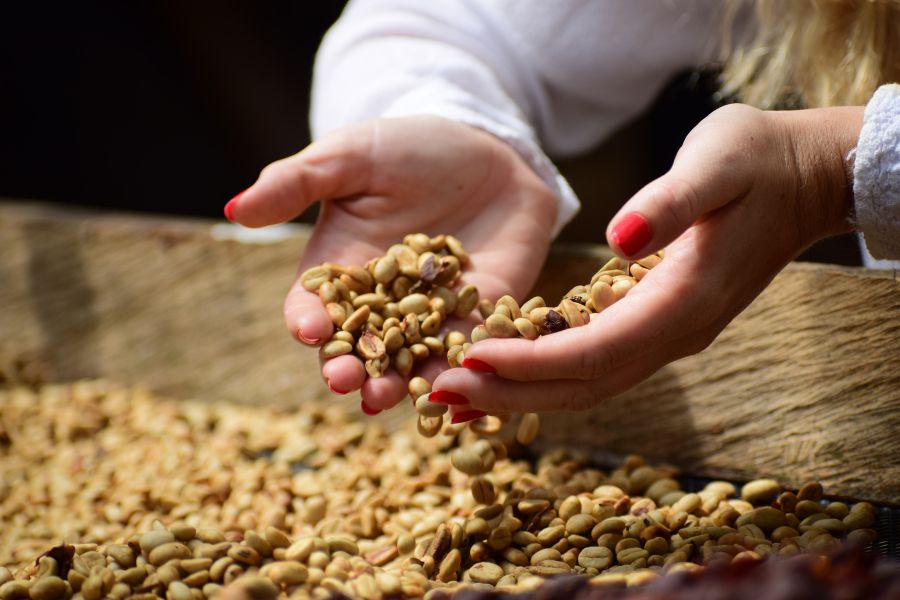As we explained in the previous blog "Coffee culture" after the flowering of the coffee tree, the coffee bush, the cherries full of coffee beans appear, today we will explain everything about cherries and the beans they contain.
The cherry, the fruit of the coffee tree
The beans that we roast, grind and use to prepare coffee are the seeds of a fruit. Coffee cherries or coffee berries are the fruit produced by the coffee tree after flowering, these cherries contain two coffee beans inside.
Where do coffee cherries come from?
After planting, the coffee tree grows for three to four years, after which it begins to produce fruit.
The tree is covered with deep green waxy leaves that grow in pairs and coffee cherries grow along the branches.
Two weeks after the onset of the rainy season, the coffee tree blossoms and fills with beautiful, aromatic white flowers. Subsequently, the fruits grow and ripen.
Ripening of the cherry fruit
Maturation times vary according to the species, with Arabica coffee taking 6 to 8 months and Robusta coffee 9 to 11 months.
Maturity is mainly determined by the colour. Most of them acquire an intense reddish colour, although there are varieties that ripen towards yellow tones.
A more accurate method of determining optimum maturity involves light pressure on the fruit to see if the seed will fall out easily. This happens just before the fruit is completely red (monochromatic).
When the fruit takes on a reddish hue it indicates that it has reached maturity and is ready to be harvested.
The choice of fruit is of great importance for the final taste of the coffee: a green or under-ripe fruit increases the bitter taste of the coffee, while an over-ripe fruit gives a strong, harsh taste.
Coffee beans
Inside each cherry we find the seed, two coffee beans that we are all familiar with.
The US National Coffee Association states that a typical coffee tree produces about 5 kg of coffee cherries per year, which is equivalent to about 2 kg of green beans.
The green berries are roasted to varying degrees to achieve the desired flavour, before being ground and brewed into coffee.
What are the differences between the different types of coffee beans?
The main coffee varieties are Arabica coffee and Robusta coffee.
The Arabica coffee bean:
- It has an elongated shape and a more greenish hue.
- The central fissure is curved, S-shaped
- Grains are less dense
- It has a fruity, sweeter taste and more aroma.
- It has a maximum caffeine concentration of 1.7%.
- It is mainly produced in Colombia, Brazil and Ethiopia.
- It accounts for 60 - 70% of world production.
Coffee bean Robusta:
- They have a rounded shape and are slightly more yellowish
- The central fissure is straight
- It has a stronger, earthier, woodier, more bitter taste.
- It has a concentration of 2.5% of caffeine.
- It is produced in Vietnam, Indonesia and Uganda.
- It accounts for 30-40% of world coffee production.
Choosing the right bean for our coffee depends on our palate.
Aromas of grains
Have you ever wondered why we love the smell of freshly ground coffee so much? That's because each bean has approximately 800 different aromas and volatile flavours, spices, herbs, nuts, vegetables, flowers...
By grinding the beans, the water can extract more of these soluble elements, which are responsible for the aroma and taste of the coffee we finally drink from our cup.
The 15-minute rule: After 15 minutes, ground coffee loses about 60 % of its aroma.
How do I prevent the aroma of coffee from disappearing?
We give you three recommendations:
- Store the coffee beans in a place away from light, air and humidity.
- Consume the coffee 6 to 8 weeks after roasting the beans.
- Always grind the coffee just before brewing.
Which coffee do you like better, Arabica or Robusta, fruity or bitter?




